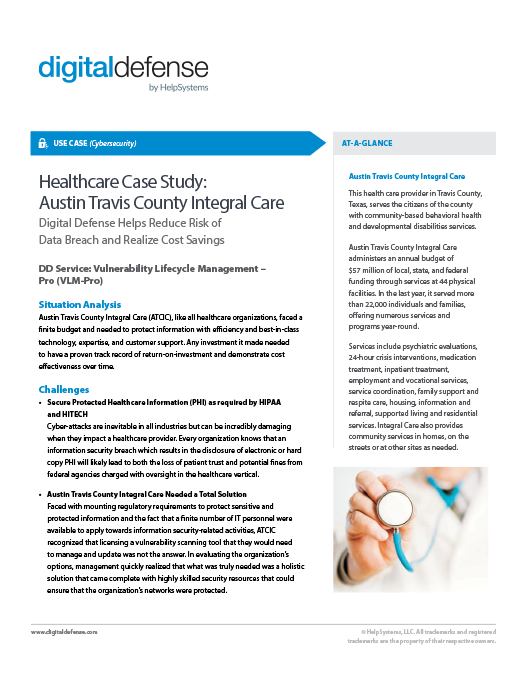Healthcare Case Study: Austin Travis County Integral Care
Austin Travis County Integral Care (ATCIC), like all healthcare organizations, faced a finite budget and needed to protect information with efficiency and best-in-class technology, expertise, and customer support. Any investment it made needed to have a proven track record of return-on-investment and demonstrate cost effectiveness over time.

Copyright © Fortra, LLC and its group of companies. Fortra™, the Fortra™ logos, and other identified marks are proprietary trademarks of Fortra, LLC. | Privacy Policy | Cookie Policy | Sitemap

